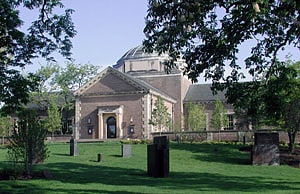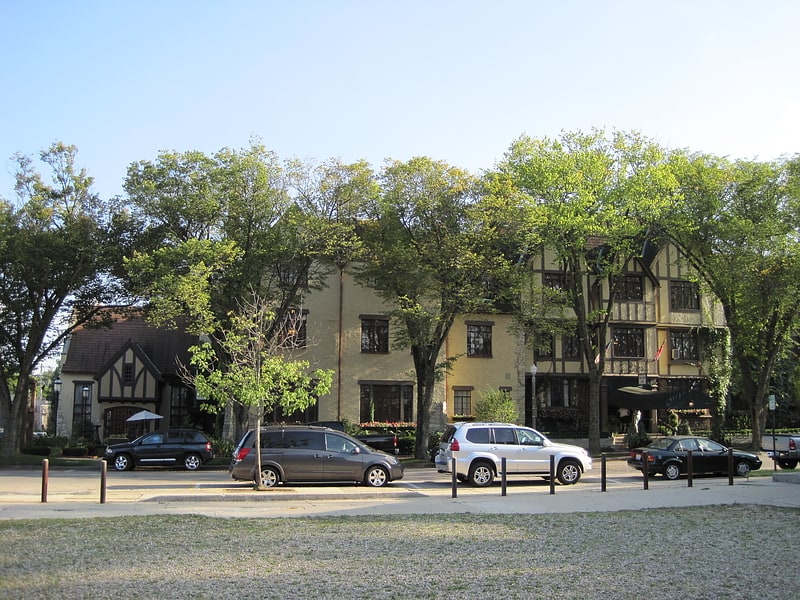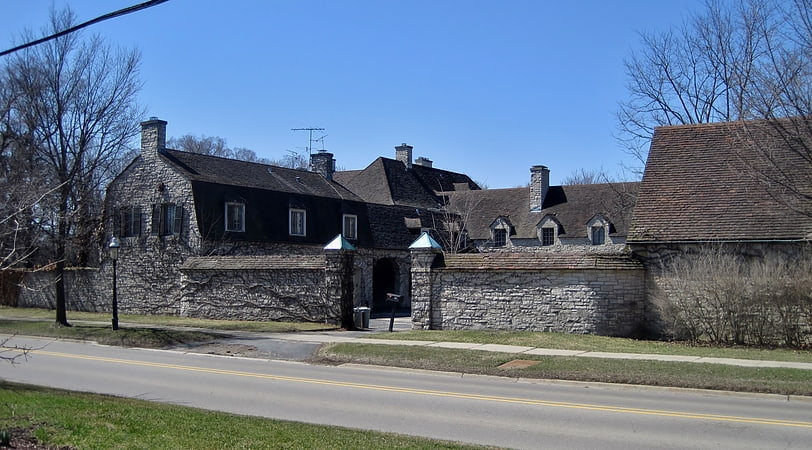Discover 11 hidden attractions, cool sights, and unusual things to do in Lake Forest (United States). Don't miss out on these must-see attractions: Market Square, Lake Forest Book Store, and Lake Forest Library. Also, be sure to include Lake Forest Parks & Recreation in your itinerary.
Below, you can find the list of the most amazing places you should visit in Lake Forest (Illinois).
Table of Contents
Market Square

Shopping center in Lake Forest, Illinois. Market Square is a 103,000-square-foot neighborhood shopping center in Lake Forest, Illinois, United States, in the Chicago metropolitan area. Opened in 1916, it is often cited as the first planned shopping center in the United States, with common design and management and designated area for parking automobiles.
Although Country Club Plaza (1923) in Kansas City, Missouri is generally credited as the first suburban and the first regional shopping center designed to accommodate shoppers arriving by automobile, Market Square was first with these features, but was neither suburban nor of "regional" size (400,000 sq. ft. or larger). Market Square was built within an already defined central retail district, replacing prior development. Lake Forest resident Arthur T. Aldis championed the notion of replacing the dilapidated business district of the town, and engaged architect Howard Van Doren Shaw.
In Illinois, the first major center to be developed after Market Square was Spanish Court (1928).
In celebration of the 2018 Illinois Bicentennial, Lake Forest Market Square was selected as one of the Illinois 200 Great Places by the American Institute of Architects Illinois component (AIA Illinois).[1]
Address: 264 Market Square, 60045 Lake Forest (North Shore)
Lake Forest Book Store

Nature, Natural attraction, Gift shop, Shopping, Bookshop, Forest
Address: 662 N Western Ave, 60045-1951 Lake Forest (North Shore)
Lake Forest Library

Library
Address: 360 E Deerpath, 60045 Lake Forest (North Shore)
Lake Forest Parks & Recreation

Park, Relax in park
Address: 400 Hastings Rd, Lake Forest (North Shore)
Elawa Farm

Farm, Park, Relax in park
Address: 1401 Middlefork Dr, 60045-1589 Lake Forest (North Shore)
Wildlife Discovery Center

Nature and wildlife, Park, Museum
Address: 1401 Middlefork Dr, 60045-1589 Lake Forest (North Shore)
Noble Judah Estate

The Noble Judah Estate is a historic estate at 111 and 211 West Westminster Street in Lake Forest, Illinois. The estate was built from 1925 to 1928 for lawyer Noble Brandon Judah, his wife and National Cash Register heiress Dorothy Patterson, and their children. It includes a main house, a garden, a pool, and several small outbuildings. The main house and the outbuildings were given French Renaissance Revival designs by architect Philip Lippincott Goodwin; their designs include steep roofs, decorative brickwork, and half-timbering. The estate's landscape design was inspired by traditional French gardens and includes a small Korean boxwood garden with a geometric layout.
The estate was added to the National Register of Historic Places on August 3, 1990.[2]
Deerpath Inn

Hotel in Lake Forest, Illinois. The Deer Path Inn is a historic hotel, originally named Deerpath Inn because of its previously location, is now located at 255 E. Illinois Road in Lake Forest, Illinois.[3]
Edward H. Bennett House and Studio

Art studio in Lake Forest, Illinois. The Edward H. Bennett House and Studio is an architecturally significant house in Lake Forest, Illinois, United States. It was designed by and built for Edward H. Bennett, who is best known as an urban planner and architect who worked in association with Daniel Burnham.[4]
Green Bay Road Historic District

The Green Bay Road Historic District is a residential historic district in Lake Forest, Illinois. Centered on Green Bay Road, a historic postal and military road that once connected Chicago with Green Bay, Wisconsin, the district includes 147 contributing buildings. The houses in the district are mainly country estates built in the late nineteenth and early twentieth century for some of the Chicago area's wealthiest residents. The Onwentsia Club, a country club to which most of the district's residents belonged, was the center of the area's social life and is also part of the district. The district includes works by several prominent Chicago architects, including Howard Van Doren Shaw, David Adler, Ambrose Coghill Cramer, and Chester Howe Walcott. While the Arts and Crafts style preferred by Shaw is common in the district, most of the other houses are designed in revival styles, including Classical Revival, Renaissance Revival, Colonial Revival, and Tudor Revival.
The district was added to the National Register of Historic Places on November 7, 1995.[5]
West Park Neighborhood Historic District

The West Park Neighborhood Historic District is a residential historic district surrounding West Park in Lake Forest, Illinois. The district includes 149 contributing buildings, most of which were built between 1907 and 1930, and West Park. Originally known as the Green Bay Addition, the neighborhood was planned in 1907 as the equivalent of a company town for the service workers at Lake Forest's many estates. Lake Forest was a popular home for the Chicago area's most wealthy residents in the early twentieth century, who typically built large estates that required teams of support workers to maintain. Architect Howard Van Doren Shaw, who also designed many of the estates, planned the neighborhood. While Shaw intended for the development to mainly use Tudor Revival architecture, few houses were designed in the style; the Colonial Revival, Folk Victorian, Craftsman, and American Foursquare styles were more common.
The district was added to the National Register of Historic Places on November 14, 2012.[6]